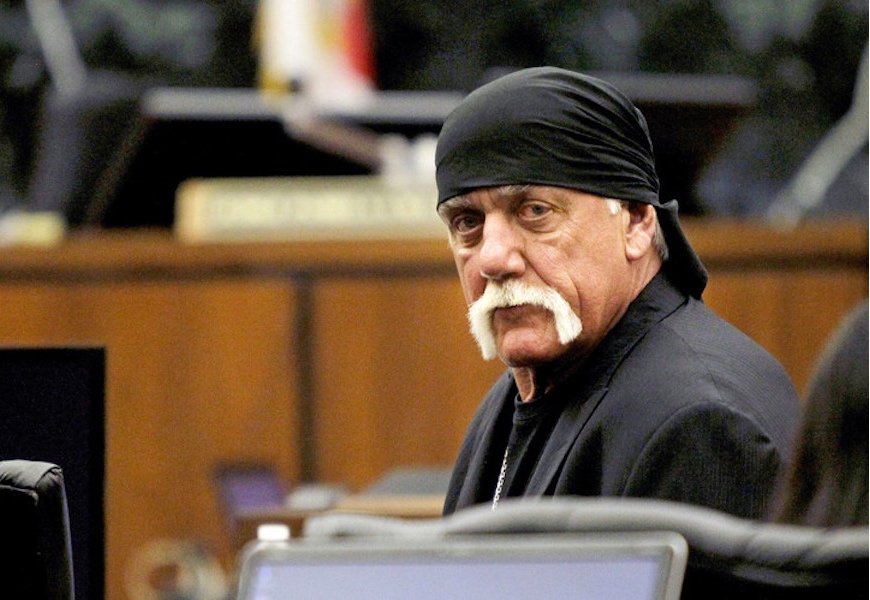Why go with a tried-and-true defence when you can get creative with it?
The law is complicated and imperfect—that’s why trials can often take months to get through. A defence team has to balance the emotional aspect of getting a jury on their side with the challenge of adhering to the law. Sometimes they have to get creative to come up with a strategy that does both—and they don’t always have a lot to work with. Once a precedent has been set, using the same defence again is easier, but someone always has to pave the way. While some of these unusual strategies are thrown out of court, others actually end up working. Just look at O.J. Simpson—his defence team coined the phrase “if the glove doesn’t fit you must acquit” which was based on a type of informal fallacy where the argument fails to address the issue in question. But somehow it still worked.
The Shaggy defence (It wasn’t me), notably used by R. Kelly, or the idiot defence (I didn’t know), used by CEOs on trial for financial crimes are two more common strategies that actually work sometimes. Here are five wild defence strategies used in actual cases—some more successfully than others.
Affluenza
On June 15, 2013, 16-year-old Ethan Couch killed four people while driving under the influence. He was charged with intoxicated manslaughter but only ended up being sentenced to 10 years of probation and therapy at an in-patient facility. Couch’s lawyers argued that he deserved to get rehab instead of prison because he suffered from “affluenza” which is defined as “an inability of an individual to understand the consequences of their actions because of their social status or economic privilege.” According to the defence, Couch didn’t understand boundaries and couldn’t be held accountable for his actions because his parents taught him that wealth could fix everything.
The lenient sentence set off a national outrage. In 2015, Couch was arrested again for violating probation and was sent to jail for two years. Since his release, he has had plenty more run ins with the law for violating probation and using drugs. Both his parents have also been arrested for various crimes. Clearly the entire Couch family has a serious case of affluenza.
Twinkie Defence
The “Twinkie defence” is a catch-all term coined by reporters during their coverage of the trial of defendant Dan White for the murders of San Francisco city Supervisor Harvey Milk and Mayor George Moscone. The actual defence strategy was constructed around diminished capacity which claimed White’s depression led him to commit murder,. His consumption of Twinkies was only mentioned in passing as an example of a symptom of his mental state. The media turned a minor reference to Twinkies into a sensationalist story that the defence was claiming White committed murder because he ate too many Twinkies.
White ended up being convicted of voluntary manslaughter instead of first-degree murder and only served five years in prison. The myth of the Twinkie defence has lived on because the media chose to pick out a tiny detail that had nothing to do with the murders.
PMS Defence
We all know PMS is a real thing, but how many people can say they’re launched into a crime spree once a month… because of PMS? The best-known case of someone using a PMS defence at trial is Sandie Craddock, a London bartender who stabbed a co-worker in 1981. Craddock had a long history of criminal behaviour including arson, assault and theft, although she claimed she couldn’t remember committing any of those crimes. Her defence strategy was based on diminished responsibility, and produced evidence in the form of diaries and records that showed the violence was cyclical and matched up with her premenstrual hormonal changes.
The defence claimed that Craddock’s PMS symptoms were so severe that they filled her with rage. PMDD (premenstrual dysphoric disorder) is a condition that some women experience that comes with severe mood swings, depression and anxiety, and as research progresses, has become more accepted as a defence in a criminal trial. Craddock was charged with manslaughter instead of murder and ended up serving a much lighter sentence.
Automatism of Penfield
Robert Torsney, a white New York City police officer, shot and killed 15-year-old Randolph Evans in 1976 and was charged with murder. Torsney was leaving a housing project when Evans, who was black, approached to speak to him. Torsney pulled his gun and shot the boy in the head point-blank. Torsney claimed self defence. Part of his defence strategy involved a claim that Tourney suffered from “automatism of Penfield”, a rare form of epilepsy that caused the officer to lose control of his body and shoot.
Automatism is a defence strategy used in other circumstances that suggests that the defendant was not aware of his or her actions when engaging in the behaviour that led to an illegal act. In Torsney’s case, the defence claimed that he didn’t consciously lift his gun to shoot Evans, it happened because of a medical condition. Torsney was found not guilty by reason of insanity and sent to a psychiatric facility.
Matrix Defence
There have been multiple cases that have used the “Matrix defence” where the defendant claimed they believed they were in an alternate reality so their actions wouldn’t be relevant in the real world. After he was arrested, Lee Malvo, one of the Beltway snipers, wrote about The Matrix and reportedly shouted “Free yourself from the Matrix”. He also claimed the movie held the secret to understanding him. Tonda Lynn Ansley murdered her landlord and claimed she didn’t believe she was killing anyone because it wasn’t reality. She explained to police that “the Matrix” was “ where you go to sleep at night and they drug you and take you somewhere else and then they bring you back and put you in bed and when you wake up, you think that it’s a bad dream.” She was found innocent by reason of insanity.
The Matrix defence is considered a descendant of the “Taxi Driver defence” which refers to John Hinckley claiming his obsession with Jodie Foster is what drove him to attempt to assassinate President Ronald Reagan. Both of these defences, which involve blurring the events in a movie with reality, are considered forms of an insanity defence. Sometimes they work, but defendants don’t get to walk free—they end up in a psychiatric hospital for a long time, which is probably for the best.












